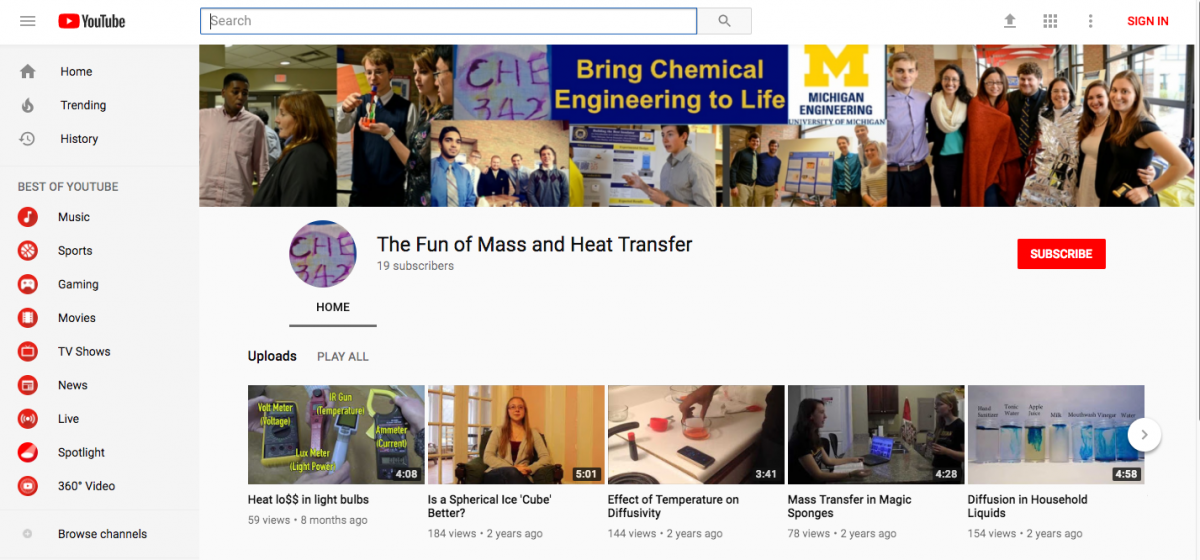- Group Work
- Student Video Creation
- Public Scholarship
Introduction
After a colleague suggested that she show a clip from the popular TV show Mythbusters to demonstrate the different regimes of boiling, Fei Wen was inspired to incorporate more forms of media into her courses, eventually asking students to create their own informational videos to explain difficult concepts to more general audiences. These videos have grown into a channel on YouTube, which is part of an outreach effort to inspire and attract a more diverse engineering population.
Active Learning in the Course
After selecting a mass or heat transfer concept from the course, groups develop and defend a project proposal with an eye to scientific accuracy and feasibility to illustrate that concept to the general public. Students then design original experiments or simulations to best demonstrate their concept, isolating one or two key experimental parameters, which helps to keep projects manageable. Using cell phones and easy-to-access video editing software, they work together to script, test, film, and edit the footage of the experiments into three to five minute videos.
Challenges and Solutions
In order to keep students on track throughout the semester, groups meet regularly with Wen and teaching assistants to get feedback and problem solve their project proposals and experiments. To ensure that students are gaining exposure to all the other topics they are not presenting, a design proposal process was created in which groups must research and “pitch” multiple topics that are significantly different from previous semesters’ and their peers’ work.
Changes in Instruction
The video assignment has increased engagement in the course, but little else about how the course is taught has changed. Without dramatically overhauling the course and how it is taught, Wen has capitalized on students’ engagement and desire to deeply learn a new concept without needing to recreate teaching materials for the course.
Benefits for Students
In addition to providing students a venue to showcase their learning to audiences beyond the class, the teaching team gathered data that the video project clearly improved student learning. Both quantitative and qualitative data collected during the Fall 2013 and Fall 2014 semesters show statistically significant improvement on learning gains related to a challenging control problem on the final exam during the semester when the video project was introduced. This work was published in Chemical Engineering Education in 2016.





